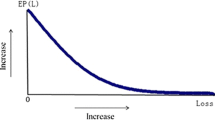Abstract
Disaster risk assessment related to natural events has generally been carried out separately by specialists in each area of earth sciences, which has two negative consequences: Firstly, results of investigations are presented in different formats, mainly maps, which differ significantly from each other in aspects such as scale, symbols and units; secondly, it is common for an area or territory to contain several hazards that can potentially interact with each other, generating cascade effects or synergies. While some authors have proposed a multi-hazard analysis framework based on the use of probabilities, the quality and quantity of data required for this approach are rarely available in developing countries. Qualitative methods, on the other hand, have traditionally been limited to overlapping maps, without considering possible spatial interactions. Given the importance of integrated assessment of natural hazards for land use planning and risk management, this article proposes a heuristic multi-hazard model appropriate for developing countries, based on a standardization of classifications and a spatial interaction matrix between hazards. The model can be adjusted to be applied at different scales and in different territories; to demonstrate its versatility, it is applied to the municipality of Poás, Costa Rica, a territory with multiple natural hazards.





Similar content being viewed by others
References
Alvarado G (2000) Los volcanes de Costa Rica: su geología, historia y riqueza natural, 2nd edn. EUNED, San José
Barrantes G (2015) Modelo de multi-amenaza natural para países en vías de desarrollo: caso de aplicación cantón de Poás, Costa Rica. Instituto tecnológico de Costa Rica: thesis for the degree of doctor in natural sciences
Barrantes G, Núñez S, Malavassi E (2011) La simulación computaciónan como herramienta para el ordenamiento territoriaal y la gestión del riesgo: el caso de caída de ceniza proveniente del Volcán Irazú, Costa Rica. Revista geográfica de América Central (Special) 48E:197–212
Delmonaco G, Margottini C, Spizzichino D (2007) Assessing and mapping multipler risks for spatial planning: approaches, methodologies and tools in Europe. European Union, Rome
Dilley M, Chen R, Deichmann U, Lerner-Lam A, Arnold M, Agwe J, Yetman G (2005) Natural disaster hotspots: a global risk analysis. The World Bank and Columbia University, Washington
Fleischhauer M, Greiving S, Wanczura S (2006) State of the art of spatial planning and natural risk mapping in European countries. AESOP 05, Viena
Heinimann HR, Holtenstein K, Kienholz H, Krummenhacher B, Mani P (1998) Methoden zur Analyse und Bewertung von Naturgefahren. In: Umwelt-Materialien, Naturgefahren BUWAL, 85, Bern, p 248
INEC (2012) Estadísticas de poblacón del Censo 2010. Population statistics from the 2010 Census. http://www.inec.go.cr/Web/Home/GeneradorPagina.aspx. Accessed 15 October 2012
Kappes M, Keiler M, von Elverfeldt K, Glade T (2012) Challenges of analyzing multi-hazard risk: a review. Nat Hazards 64:1925–1958
Komendantova N, Mrzyglocki R, Mignan A, Khazai B, Wenzel F, Patt A, Fleming K (2014) Multi-hazard and multi-risk decision support tools as a part of participatory risk governance: feedback from civil protection stakeholders. Int J Disaster Risk Reduct 8:1–18
Marzocchi W, Garcia A, Gasparini P, Mastellone ML, Di Ruocco A (2012) Basic principles of multi-risk assessment: a case study in Italy. Nat Hazards 62:551–573
Montero W, Soto G, Alvarado G, y Rojas W (2010) División del deslizamiento tectónico y transtensión en el macizo del Volcán Poás (Costa Rica), basado en estudios neotectónicos y de sismicidad histórica. Revista Geológica de América Central 43:13–36
Perales M, Cantarero F (2010) Problemas y retos en el análisis de los riesgos múltiples del territorio: propuesta metodológica para la elaboración de cartografías multi-peligros. Boletín de la Asociación de Geógrafos Españoles 52:245–271
PREDECAN (2009) Incorporando la gestión del riesgo de desastres en la planificación y gestión territorial: guía técnica para la interpretación y aplicación del análisis de amenazas y riesgos. General Secretariat of the Andean Community, Lima
Prosser JT, Carr MJ (1987) Poás volcano, Costa Rica: geology of the summit region and spatial and temporal variations among the most recent lavas. J Volcanol Geotherm Res 33(1–3):131–146
Ruiz P, Gazel E, Alvarado GE, Carr MJ, Soto GJ (2010) Caracterización geoquímica y petrográfica de las unidades geológicas del macizo del volcán Poás, Costa Rica (Geochemical and petrographic characterization of the geological units of the Poás volcano massif). Revista Geológica de América Central 43:37–66
Acknowledgements
To Ph.D. Eduardo Malavassi for his guidance and corrections and to The Office of the Vice Provost for Research of the National University of Costa Rica for the support received.
Author information
Authors and Affiliations
Corresponding author
Rights and permissions
About this article
Cite this article
Barrantes, G. Multi-hazard model for developing countries. Nat Hazards 92, 1081–1095 (2018). https://doi.org/10.1007/s11069-018-3239-6
Received:
Accepted:
Published:
Issue Date:
DOI: https://doi.org/10.1007/s11069-018-3239-6




